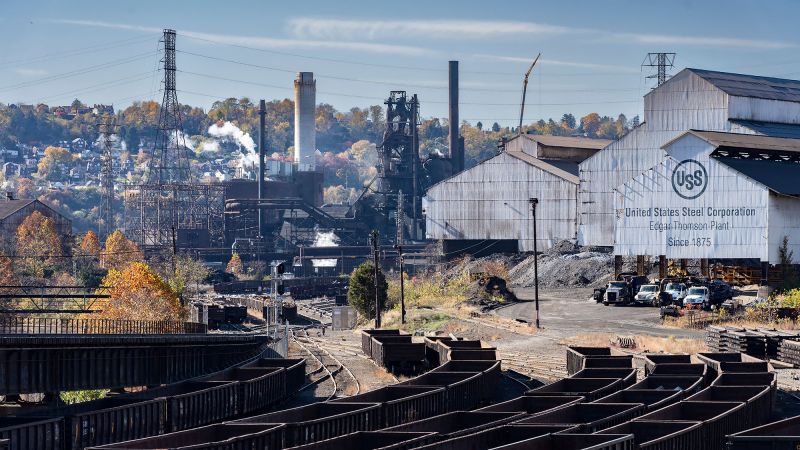In a significant development within the U.S. industrial landscape, President Donald Trump recently announced a partnership between U.S. Steel, a long-standing American steel manufacturer, and Nippon Steel, a prominent Japanese steelmaker. This partnership is aimed at revitalizing the steel industry in the United States and is projected to attract an impressive $14 billion in investment, with a focus on creating and safeguarding jobs in Pittsburgh, the historic hub of American steel production. According to Trump, this collaboration aims to generate at least 70,000 jobs and inject significant capital into the U.S. economy over the next 14 months. Such a substantial investment holds the potential to reshape various industrial sectors and bolster economic growth.
On his TruthSocial platform, Trump expressed his enthusiasm regarding the partnership, emphasizing the importance of keeping the U.S. Steel headquarters in Pittsburgh. He elaborated on the deal, which he characterized as a “planned partnership,” highlighting the anticipated economic benefits that would follow this collaboration. Trump’s forthcoming visit to the steel plant, scheduled for next Friday, is touted as a “BIG rally,” further underscoring the political significance surrounding this announcement. However, it is worth noting that the details surrounding the partnership remain somewhat vague. Critics have raised questions about whether this agreement constitutes a genuine partnership or rather an acquisition, and to what extent control would remain with U.S. Steel.
The backdrop to this announcement includes former President Joe Biden’s intervention in the steel industry. During his last week in office, Biden blocked a $14.3 billion acquisition deal, expressing concerns around foreign ownership of a critical segment of American manufacturing. The topic remains contentious, given the historical significance of U.S. Steel, which once served as an emblem of American industrial strength.
It is interesting to observe how Trump has aligned himself with Biden’s initial stance against foreign acquisitions of U.S. Steel, expressing a desire for the company to remain under American control. In a notable reflection of the evolving situation, the Trump administration indicated a willingness to reconsider the partnership in March. This shift became evident as they filed motions to extend deadlines associated with a lawsuit brought forth by U.S. Steel and Nippon Steel against the Committee on Foreign Investment in the United States (CFIUS), which assesses national security risks tied to foreign investments.
CFIUS initiated a review of the acquisition in April and subsequently submitted a recommendation to the Trump administration regarding possible measures to address national security concerns. According to reports, Nippon Steel is prepared to increase its investment pledge in the U.S. steel operations to meet the recommended requirements, which could involve a new $4 billion steel mill within the United States.
Reflecting on U.S. Steel’s storied legacy, it once epitomized American industrial might, achieving immense stature soon after its establishment in 1901. However, the company has experienced considerable decline over the past several decades, no longer retaining the status of the largest steel producer in the U.S. The current employment level at U.S. Steel has dwindled to approximately 14,000, of which a significant portion are members of the United Steel Workers union. This decline complicates the political narrative surrounding the company, particularly in a state like Pennsylvania that bears considerable political weight.
Union opposition to the recent partnership has emerged, expressing concern that Nippon Steel may not sustain long-term commitments to U.S. operations. The United Steel Workers issued a press release strongly objecting to the potential sale, outlining the risks it poses to American workers and national security.
Political figures have also weighed in, with Republican Pennsylvania Senator Dave McCormick endorsing the partnership as a way to maintain U.S. oversight of U.S. Steel, while Democratic Senator John Fetterman condemned the original deal as a “death sentence” for American jobs and manufacturing.
In a reaction to the partnership announcement, U.S. Steel’s stock surged by 21%. As discussions surrounding the agreement continue, stakeholders keenly await further detail and clarity on the implications of this potential collaboration for both the industry and the workforce. The story remains dynamic as political and economic factors intertwine in the landscape of American manufacturing.



